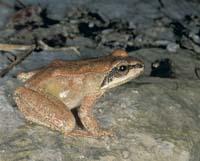Doubt that amphibians are good indicators of pollution

Experts from the University of South Dakota have collected more than 20,000 research on the relationship between amphibians and toxicity and concluded that amphibians are no more vulnerable than other animal groups. They resist several contaminants better than expected. Consequently, amphibians have been questioned as an indicator of ecosystem health.
In total, 23,942 amphibian investigations have been collected, studying 1,075 species and 73 pollutants. And, according to data, amphibians are very sensitive to phenolic group substances, but not heavy metals, inorganic compounds and pesticides. Amphibians' ability to cope with the damage caused by these substances is at least the same as other types of animals.
But, according to other experts, this does not mean that amphibians are not good indicators of contamination. The erpetologist of the Aranzadi Science Society, Xabier Rubio, considers that the ability to be an indicator must also be measured according to other parameters: "This research has studied chemicals, but there are other factors. Some are physical and other biological, such as habitat loss. The best indicators of these other factors are amphibians, without a doubt. For example, they are four times more sensitive than birds."
Amphibians are not totally marginalized. "Once they read their conclusions well, they do not say that amphibians cannot act as indicators. Other studies claim that amphibians are the best indicators among vertebrates," says Rubio.
South Dakota researchers have proposed using other species, especially brachiopods, as an indicator. This is already done, for example, in the United States the Environmental Protection Agency uses other indicators to measure ecosystem health.
Buletina
Bidali zure helbide elektronikoa eta jaso asteroko buletina zure sarrera-ontzian











